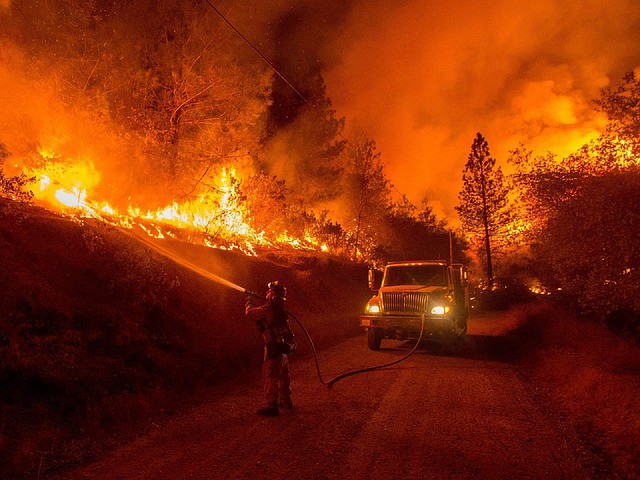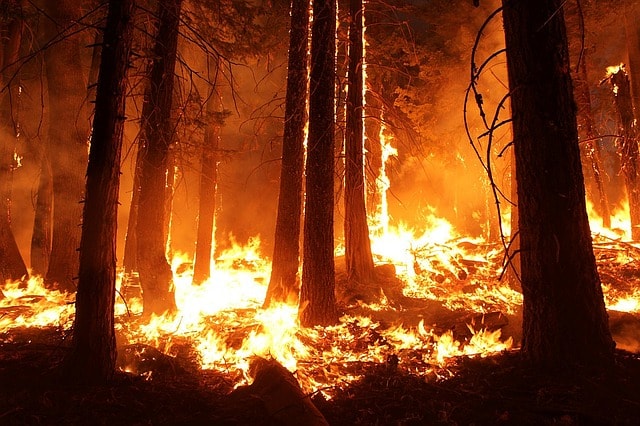Wildfires are natures deadliest and the most unpredictable threats. They are real part of life in so many places. Each and every year especially the summers we hear of thousands of people losing their homes to wildfires together with everything that they own. To protect homes from this threat, it is imperative to reduce our home’s flammability.
Among the three most important factors in home flammability is location, eliminating flammable features of your home and proper defensible space. Geography is also important when investigating the burning of homes as a result of wildfires. Investigating where the house is located and where various houses are placed in the landscape is also highly important.
Below are some of the astounding ways of protecting our homes from deadly wildfires.
1. Family members can come together and make an emergency evacuation plan
Since the wildfires can develop very quickly, it is imperative to hatch a plan to get everyone to safety. People have to educate themselves on some of the established evacuation routes and shelters within the area. A fire may be serious that it blocks most of the routes. It is therefore important to know about more than one way just in case the primary route is blocked.
2. It is important to maintain the vegetation around the home
There are some trees that easily burn as compared to others thus it is important to plant the ones of lesser threat near your home. In other words, people should be conscious of what they plant close to their homes. Trees like pine burn fast than hardwood trees like the Oak. Wildfires are likely to burn loose leaves and limbs thus it is important to trim trees and make sure to regularly pick up the limbs and branches.
3. Assemble an emergency kit
There are key tools that are required when such a disaster takes place. The essential items should include items like a hand-crank radio, water, flashlights, dust masks, extra batteries, emergency cell phone charger, a signal whistle and a first aid kit. An individual may be cut out of their home or from help; hence, these items can be useful in such events.
4. The roofs and gutters should be cleared
Dry branches and dead leaves can fuel fires and cause them to spread fast. People should ensure that they clear their gutters and roofs from the dry branches and leaves.
5. When building homes it is important use fire-resistant materials
There are some materials that if used may act as fuel source and should not be used to build homes. In fact, building the house roofs with non-combustible materials may protect your home from wildfire.
6. Individuals should use 0.125-inch screens to seal off areas under the house and porches
This should also be done for attic and any other open space. It functions in such a way that it prevents drifting embers from getting into small flammable spaces.
7. People should keep a UL-LISTED, ABC-style fire extinguisher
Adequate training should be done for the whole family in fire prone areas so that each and every person knows how to use fire extinguishers. Kidde Full Home Fire Extinguisher is one of the best in the market currently that can be purchased by these people to help protect homes from wildfires.
8. Make a fire-fighting kit which includes simple fire tools
The fire tools that should be used include axe, shovel, bucket, saw and rake. In the event that the fire is still off a safe distance, these mentioned tools can be used to help contain and even stop small fires caused by embers.
9. There should be adequate water sources in case of fires to help put it down
Homes should have garden hoses on two sides. In addition, they should be long enough to reach the outer portions of the home. People should also fill their bathtubs with water together with sinks so that the fire is easily extinguished when it tries to spread to other areas in the house. This may help maintain the house structure while containing the fire.
10. It is important to install heavy fire-retardant drapes on all the windows in a home
If there is any hope and chance of saving a home structure, then individuals have to ensure they keep fires away from easy fuel. Only then will they be able to survive the disaster. The heat from wildfires can ignite curtains inside the house through large glass windows. For large windows, closeable shutters should be considered. Smoke detectors should also be placed on each floor of our homes and be checked each time if they are functional.
11. Any material that easily burns such as flammable debris should be eliminated from the home
Outdoor burning should be avoided instead, other alternatives should be considered. Whenever possible, it is important to recycle the compost and mulch. Recycling is better than throwing them in areas where they can easily be targeted by fire and act as fuel source. Thus to protect our homes it is important to adopt this practice.
12. It is imperative to keep our grass mowed 100 feet from structures and around fuel tanks
When the lawn is watered and moved to the required levels of 3 inches or less on every side of the buildings, the lawn will discourage the fast spread of fire. Additionally, stone and rock landscaping materials can be considered for positioning next to buildings as they can act as protection materials against spreading wildfires. They do not catch fire easily too.
13. Accessibility is very important
Keep driveways accessible for fire trucks and provide a turn-around area. While at this, it is important to make sure that your home address and street signs are visible from the main road and they are made of non-combustible and reflective materials. Similarly, when one stands across the street and seem not to see their street sign it is required that they trim the vegetation around their home. It helps in response during a fire outbreak.
14. Arrangement of vegetation is also important
When looking at a vertical arrangement of vegetation it is key to determine whether there is continuous fuel reaching from the ground to the crowns of the trees. Continuous fuel in this case is grass, branches and leaves. This is known as ladder fuel as it provides a “ladder” for fire to climb from the ground to the crown. To prevent mass destruction from wildfires it is important to eliminate this type of ladder fuel through mowing the tall grass, pruning the lower branches off trees and trimming shrubs to six to ten feet.
15. The fireplace chimneys should have effective spark arrestor
Everyone should inspect their chimneys each year for any faults such as cracks in liner and brick. Additionally, they should clean wood stove chimneys and fireplace at least twice yearly. These can be fuel sources and as such, should be maintained so that they do not cause serious effects in the event that there are wildfires.
16. Oily rags, gasoline and any other flammable materials can be stored in approved safety cans
Besides that, the safety cans should be kept in fire-resistant metal, in garages and brick building. Solid frame resistant sheeting can be used to enclose the foundations of our homes, overhangs, decks and outbuildings together with trailers. This helps keep sparks from igniting most materials underneath.
17. Ensure recreational fires are made in container or fire-safe pit and completely extinguished before leaving
Before a person lights any outdoor fire, they should check for local restrictions and even permit requirements. Similarly, when the weather is poor, people should avoid lighting fires. For example, when there is a high wind, low humidity and high temperatures, it is easy for wildfires to spread to home structures.
18. There are people who have propane tanks in their home compounds
To ensure that people are protected from wildfires they can clear a 10 foot space around propane tanks. This space should be kept in gravel, rock or short, well-watered grass. The most appropriate thing is to locate the propane tanks at least 10 feet away from the home. If we are to reduce the intensity of an approaching fire it important to look beyond the thirty-foot home defensible space.
19. Clean up the home defensible zone
It is important to remove any old cars, downed trees, lumber piles and any other debris. While doing this, home owners must ensure that there is adequate space for the firefighters to protect the backside of the home or home area. This must also entail ensuring the removal of any obstructing debris together with trees and ascertain that there are alternative accessible gates.
20. Take action once there is a fire in your area
People should not watch from far when the fires begin. Once there is a sign of fire it should be extinguished immediately. If the fire is too big, evacuation plans must start and the relevant authorities must be notified in the shortest time possible.







